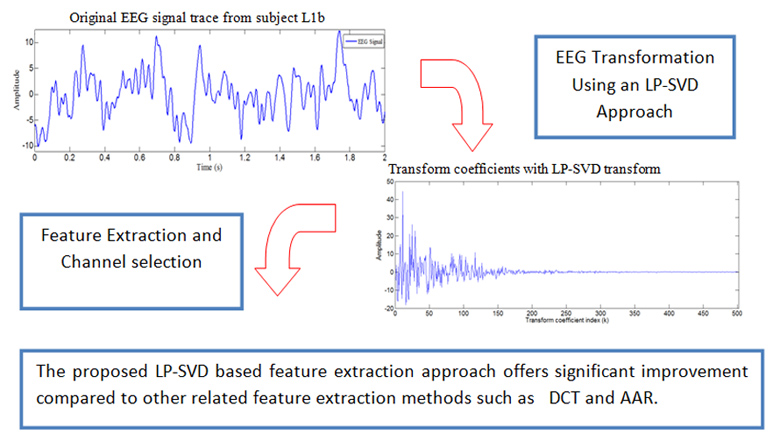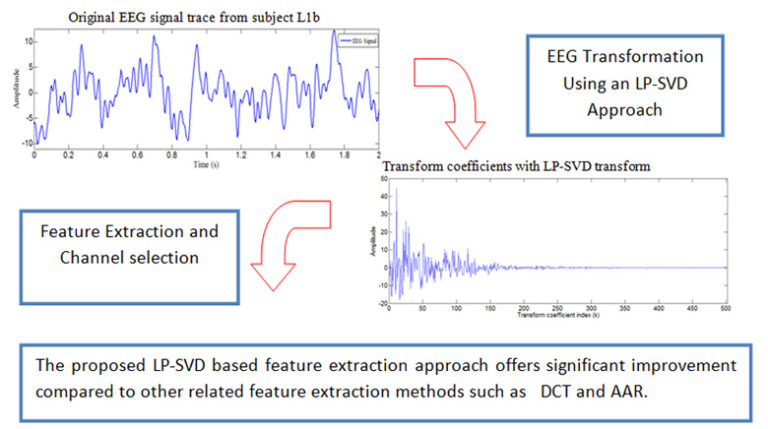
In this paper, we present a new motor imagery classification method in the context of electroencephalography (EEG)-based brain–computer interface (BCI). This method uses a signal-dependent orthogonal transform, referred to as linear prediction singular value decomposition (LP-SVD), for feature extraction. The transform defines the mapping as the left singular vectors of the LP coefficient filter impulse response matrix. Using a logistic tree-based model classifier; the extracted features are classified into one of four motor imagery movements. The proposed approach was first benchmarked against two related state-of-the-art feature extraction approaches, namely, discrete cosine transform (DCT) and adaptive autoregressive (AAR)-based methods. By achieving an accuracy of 67.35%, the LP-SVD approach outperformed the other approaches by large margins (25% compared with DCT and 6 % compared with AAR-based methods). To further improve the discriminatory capability of the extracted features and reduce the computational complexity, we enlarged the extracted feature subset by incorporating two extra features, namely, Q- and the Hotelling’s T² statistics of the transformed EEG and introduced a new EEG channel selection method. The performance of the EEG classification based on the expanded feature set and channel selection method was compared with that of a number of the state-of-the-art classification methods previously reported with the BCI IIIa competition data set. Our method came second with an average accuracy of 81.38%.

